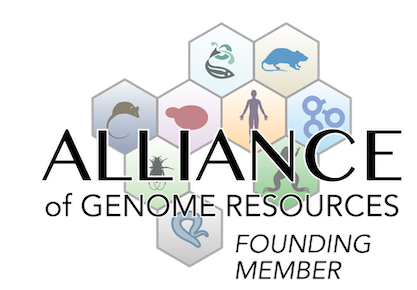growth/size/body
micrognathia
(
J:371501
)
|
• at E13.5
|
|
• frontal views of compound heterozygous embryos indicate midfacial narrowing at E15.5
|
|
• by E11.5, maxillary hyperplasia results in midline fusion of maxillary prominences and midfacial hypoplasia
|
|
• at E13.5
|
|
• compound heterozygous embryos exhibit a constricted and high-arched palate at E17.5
|
|
• compound heterozygous embryos exhibit hypoglossia at E13.5 and E15.5
|
|
• at E13.5
|
|
• in culture, immunostaining for ARL13B (a marker of primary cilia) and gamma-TUBULIN (a centrosome marker) shows a severe reduction in the number of ciliated cells in immortalized facial mesenchyme cells, indicating impaired ciliogenesis
• moreover, immortalized facial mesenchyme cells show a nearly complete loss of PIBF1 nuclear expression
• RNAscope in frontal sections indicates broad expansion of Lhx6 expression throughout the CNCC-derived facial mesenchyme at E13.5
|
cardiovascular system
|
• at E9.5
|
homeostasis/metabolism
|
• at E9.5
|
craniofacial
micrognathia
(
J:371501
)
|
• at E13.5
|
|
• at E9.5, whole head (cranial) tissue shows a skewed ratio of GLI3FL:GLI3R (a hallmark molecular readout of a ciliopathy) as well as an indication of impaired Hedgehog (HH) signal transduction
|
|
• compound heterozygous embryos exhibit hypoplastic and anteriorly displaced frontonasal prominences at E11.5
• whole mount RNAscope indicates expanded Fgf8 expression in the epithelium of the frontonasal prominence at E9.5
|
|
• at E11.5
|
|
• whole mount RNAscope indicates expanded expression of Fgf8 (fibroblast growth factor 8) in 1st arch derivatives (maxillary and mandibular prominences), along with increased Lhx6 (LIM homeobox protein 6) expression adjacent to the Fgf8 domain within the mandibular prominence at E9.5
|
|
• at E9.5
|
|
• compound heterozygous embryos exhibit midline fusion of the maxillary prominences at E11.5, E13.5 and E15.5
• whole mount RNAscope indicates expanded expression of Fgf8 (fibroblast growth factor 8) in 1st arch derivatives (maxillary and mandibular prominences), along with increased Lhx6 (LIM homeobox protein 6) expression adjacent to the Fgf8 domain within the maxillary prominence at E9.5
|
|
• compound heterozygous embryos exhibit maxillary prominence hyperplasia at E9.5 and E11.5
|
|
• whole mount RNAscope indicates expansion of Lhx6 expression in the first branchial arch at E9.5
|
|
• frontal views of compound heterozygous embryos indicate midfacial narrowing at E15.5
|
|
• by E11.5, maxillary hyperplasia results in midline fusion of maxillary prominences and midfacial hypoplasia
|
|
• at E13.5
|
|
• compound heterozygous embryos exhibit a constricted and high-arched palate at E17.5
|
|
• compound heterozygous embryos exhibit hypoglossia at E13.5 and E15.5
|
|
• at E13.5
|
embryo
|
• increased amounts of Sox10+ cranial neural crest cells (CNCCs) are observed streaming into the frontonasal and maxillary prominences at E9.0
|
|
• whole mount RNAscope indicates expansion of Lhx6 expression in the first branchial arch at E9.5
|
|
• in culture, immunostaining for ARL13B (a marker of primary cilia) and gamma-TUBULIN (a centrosome marker) shows a severe reduction in the number of ciliated cells in immortalized facial mesenchyme cells, indicating impaired ciliogenesis
• moreover, immortalized facial mesenchyme cells show a nearly complete loss of PIBF1 nuclear expression
• RNAscope in frontal sections indicates broad expansion of Lhx6 expression throughout the CNCC-derived facial mesenchyme at E13.5
|
nervous system
|
• whole mount RNAscope indicates a significant decrease in Shh (sonic hedgehog) expression in the developing ventral forebrain at E9.5
|
|
• telencephalic vesicles fail to fully separate even at E16.5
|
|
• whole mount RNAscope indicates expanded Fgf8 expression in the midbrain-hindbrain boundary at E9.5
|
|
• no separation between the telencephalic ventricles is noted at E11.5; however, marginal separation common to semilobar holoprosencephaly (HPE) is observed by E13.5
• HPE-like phenotypes continue to be present at E15.5 and E16.5
|
|
• in addition to semilobar HPE, duplication of the medial ganglionic eminence is observed at E13.5, as determined by immunofluorescent staining of NKX2.1
• RNAscope in frontal sections shows expanded Lhx6 expression within the duplicated and endogenous medial ganglionic eminence
|
exencephaly
(
J:371501
)
|
• at E9.5
|
cellular
|
• in culture, immunostaining for ARL13B (a marker of primary cilia) and gamma-TUBULIN (a centrosome marker) shows a severe reduction in the number of ciliated cells in immortalized facial mesenchyme cells, indicating impaired ciliogenesis
|
|
• cranial sections of E9.5 embryos show absence of BBS4 (Bardet-Biedl syndrome 4) co-localization with gamma-TUBULIN and significantly reduced expression of PCM1 (pericentriolar material 1) at the centrosome, indicating impaired recruitment of key pericentriolar proteins
|
|
• increased amounts of Sox10+ cranial neural crest cells (CNCCs) are observed streaming into the frontonasal and maxillary prominences at E9.0
|
skeleton
micrognathia
(
J:371501
)
|
• at E13.5
|
vision/eye
|
• at E13.5
|
digestive/alimentary system
|
• compound heterozygous embryos exhibit a constricted and high-arched palate at E17.5
|
|
• compound heterozygous embryos exhibit hypoglossia at E13.5 and E15.5
|
limbs/digits/tail
polydactyly
(
J:371501
)
|
• compound heterozygous embryos exhibit extra digits at E13.5 and E15.5
|
Mouse Models of Human Disease |
DO ID | OMIM ID(s) | Ref(s) | |
| Joubert syndrome 33 | DOID:0080279 |
OMIM:617767 |
J:371501 | |



 Analysis Tools
Analysis Tools